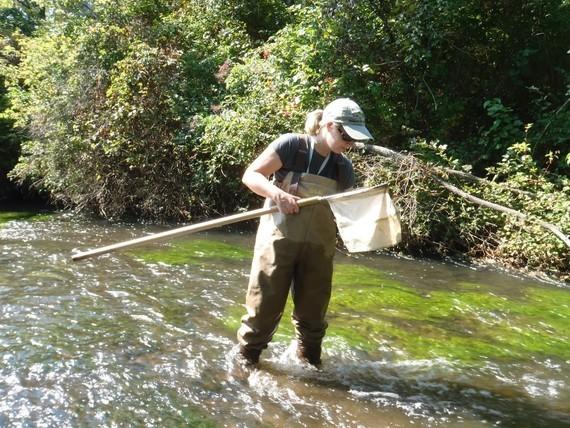
A biologist sampling for aquatic insects. Michigan Department of Environment, Great Lakes and Energy staff sampled 741 locations over the summer of 2020. Credit: Department of Environment, Great Lakes and Quality
By McKoy Scribner
Capital News Service
The Department of Environment, Great Lakes and Energy is assessing the state’s water quality, something that’s necessary in a state that’s rich in water resources.
The department is conducting its annual surface water sampling to protect human health and aquatic life and to maintain recreational suitability.
Water sampling is done at locations across the state. But certain locations are trend sites. This means staff will return in consecutive years to understand what long-term developments look like.
Kevin Goodwin is an integrated report specialist for water assessment with Environment, Great Lakes and Energy. He says the department samples for a variety of reasons.
“Things like bacteria levels, E. coli for concerns for human health, to fish contaminants looking at whether or not folks can eat fish safely in the state, to looking at insects and other fish communities to see what the ecosystem looks like and a host of other things,” Goodwin says.
Sampling takes place in rivers, lakes, and other bodies of water.
In 2020, the staff sampled:
- 151 macroinvertebrate sites
- 73 water chemistry monitoring sites
- 31 harmful algal bloom monitoring sites
- 123 E. coli monitoring sites
- 48 fish contaminant monitoring sites
- 287 PFAS surface water sampling sites
- 7 sediment sampling projects
- 9 river nutrient expression sampling sites
- 12 lake nutrient expression sampling sites
Goodwin says the team has a process where it asks for input on where staff should go and what problems there might be.
“That’s kind of a targeted approach. We can pick places that we or others have an interest or concern and we can look there. Then we’ve got other programs that we’re just kind of broadly moving around the state just to kind of keep general tabs of what’s going [on].”
Results start becoming available in the fall through the winter. The timing depends on how long it takes to get the lab results entered into various databases, quality-checked and then analyzed.
McKoy’s story is brought to you as part of a partnership between WKAR and Michigan State University’s Knight Center for Environmental Journalism.